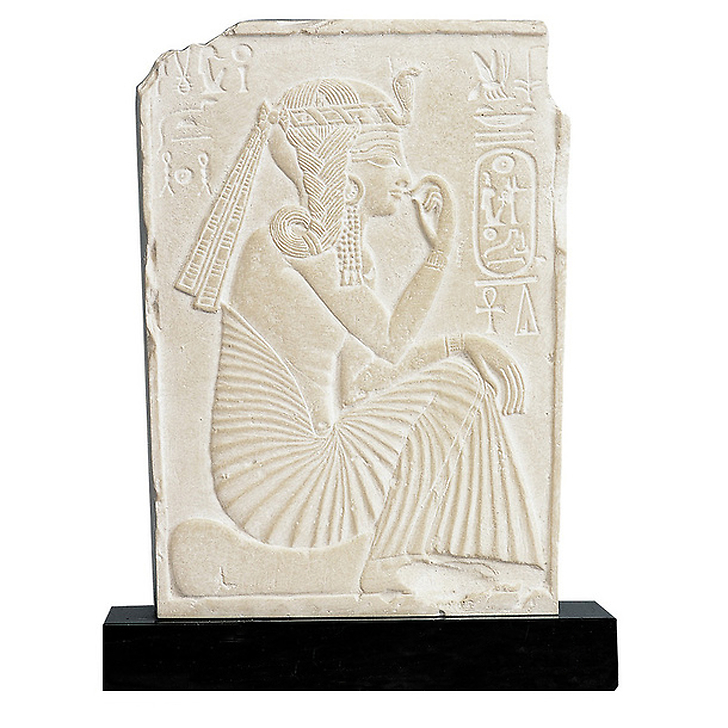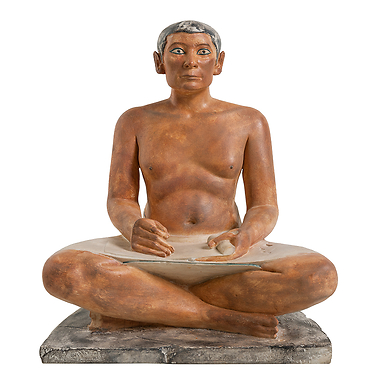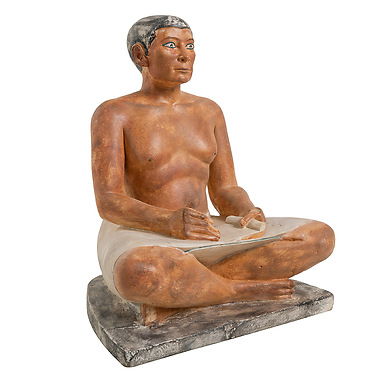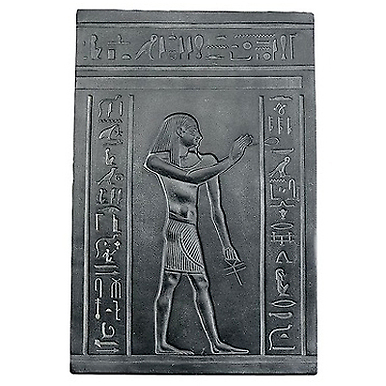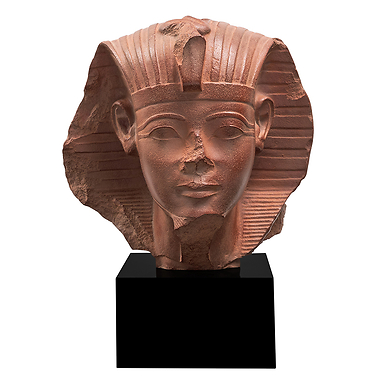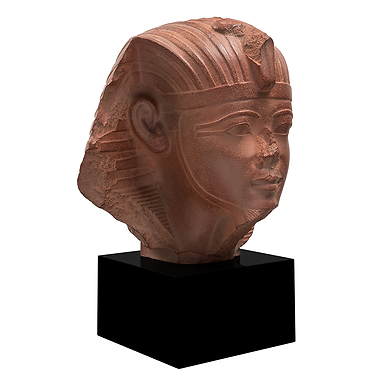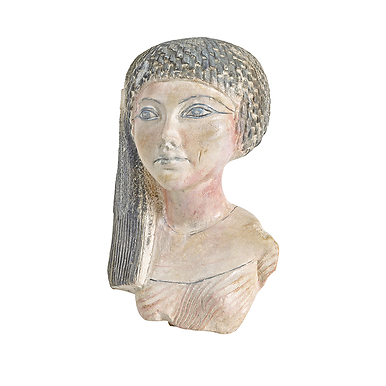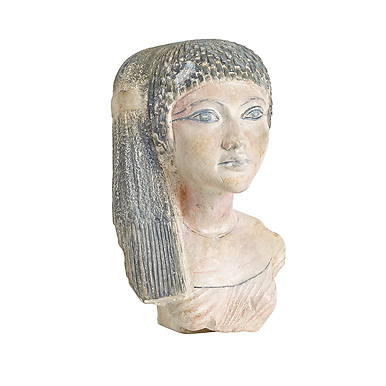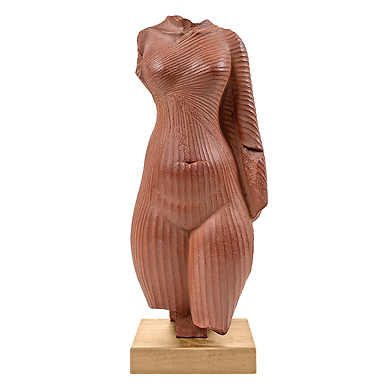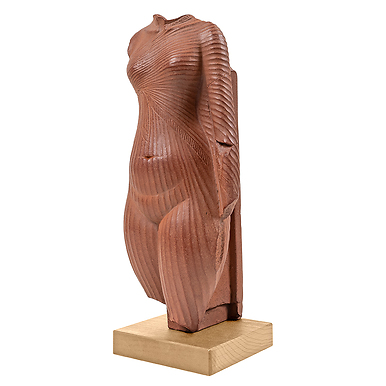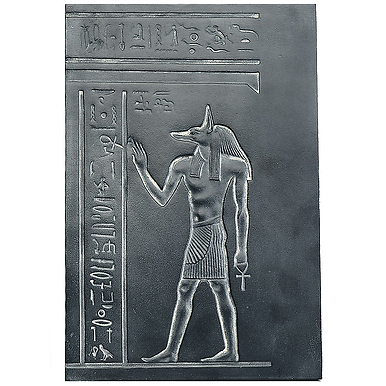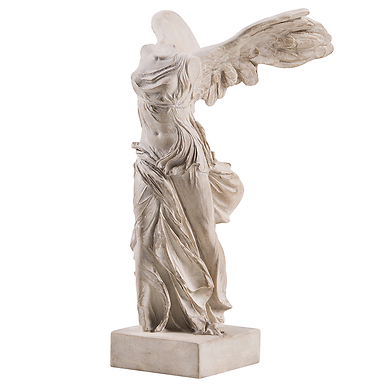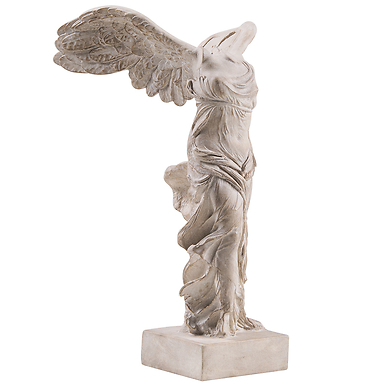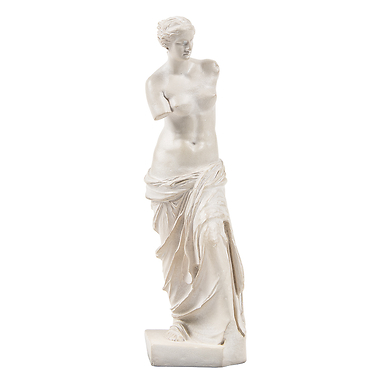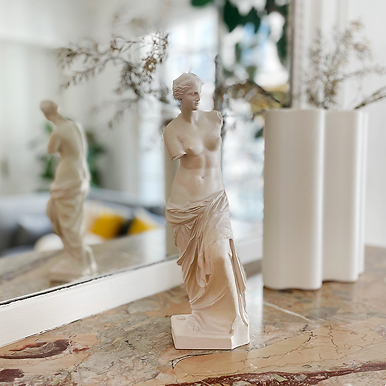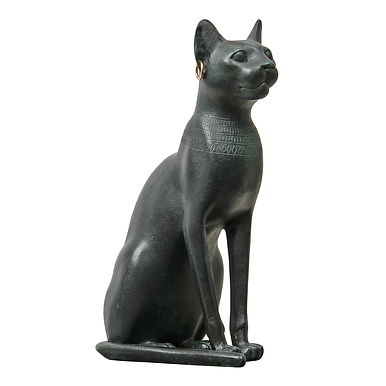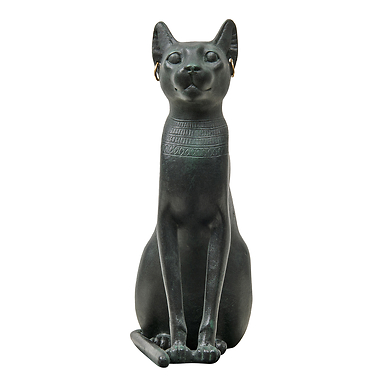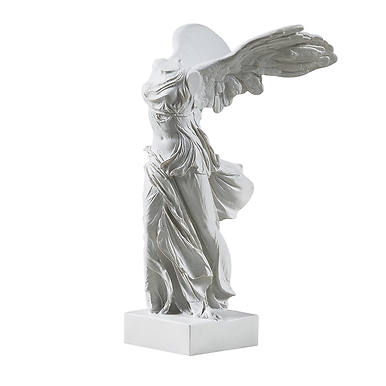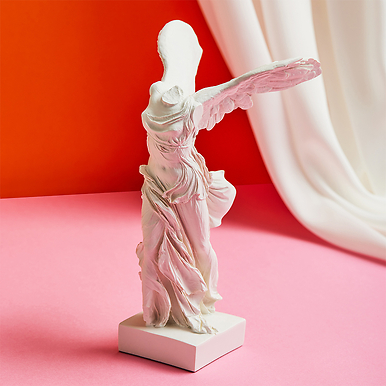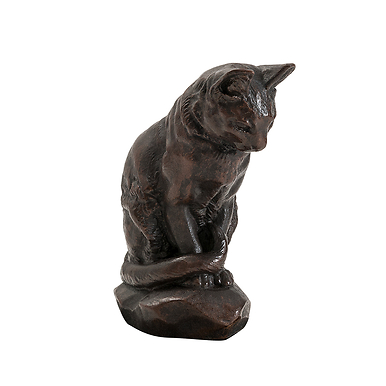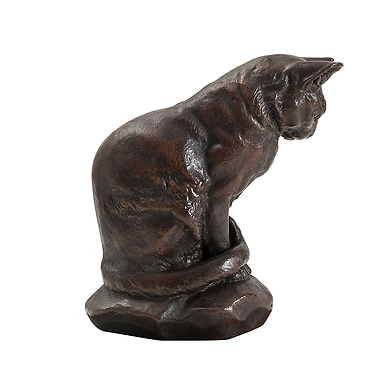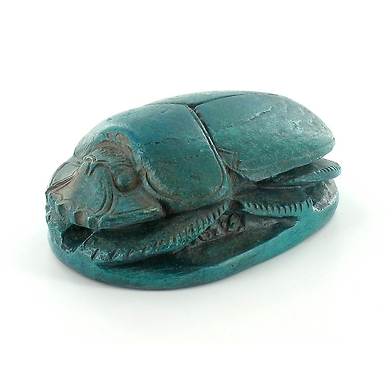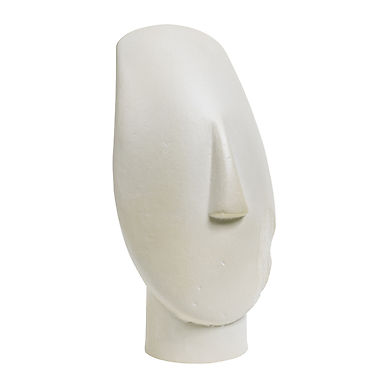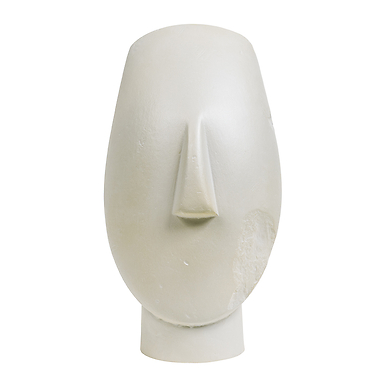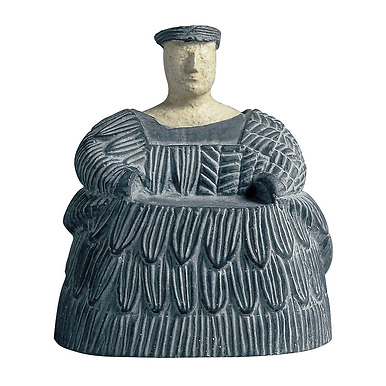Sculpture Ramses II as a child Stele
RE000052
Reproduction patinated by hand on a black wooden base. Mold made from an imprint of the original work exhibited at the Louvre.
Ramses as a child: this representation of the great sovereign of Egypt features the king as a child with a bare torso. Here his braid is falling to the side of the shaved head...
Read more
Reproduction patinated by hand on a black wooden base. Mold made from an imprint of the original work exhibited at the Louvre.
Ramses as a child: this representation of the great sovereign of Egypt features the king as a child with a bare torso. Here his braid is falling to the side of the shaved head, a fashionable feature characteristic for the young prince. He wears a heavy earring, seemingly left over from puberty, and holds his finger to the mouth in imitation of the young god Horus.
In front of the figure, the coronation name of Ramses II indicates precisely that this indeed is a portrait of the sovereign already enthroned. It may be asked whether one is before another piece of evidence strengthening the king's word that repeatedly stated how, from early childhood, his father Sethi I had placed his son to govern along with him.
On the other side: the god Ptah is represented in a shallownaos, the opening of which is set at eye level. It is the divine feature that symbolizes the revival of nature, an event allowing for the sap to emerge and the bud to sprout. He is called the "Governor of cosmic balance" (and also truth) and "Sovereign of the Two Lands" (Egypt).
This god from Memphis was venerated by one of Ramses' viziers (perhaps Pasar) whose name and head have disappeared, but it is possible to identify the dress as the typical rigid robe of his office.
Close
Sold by GrandPalaisRmn

